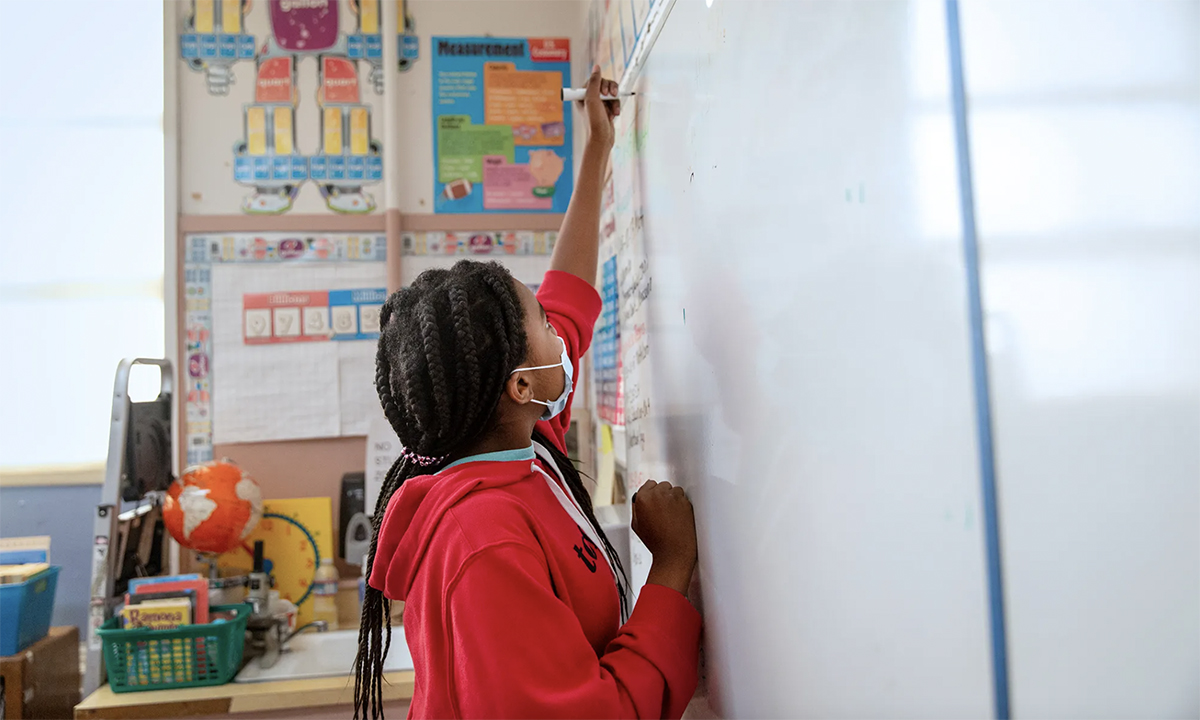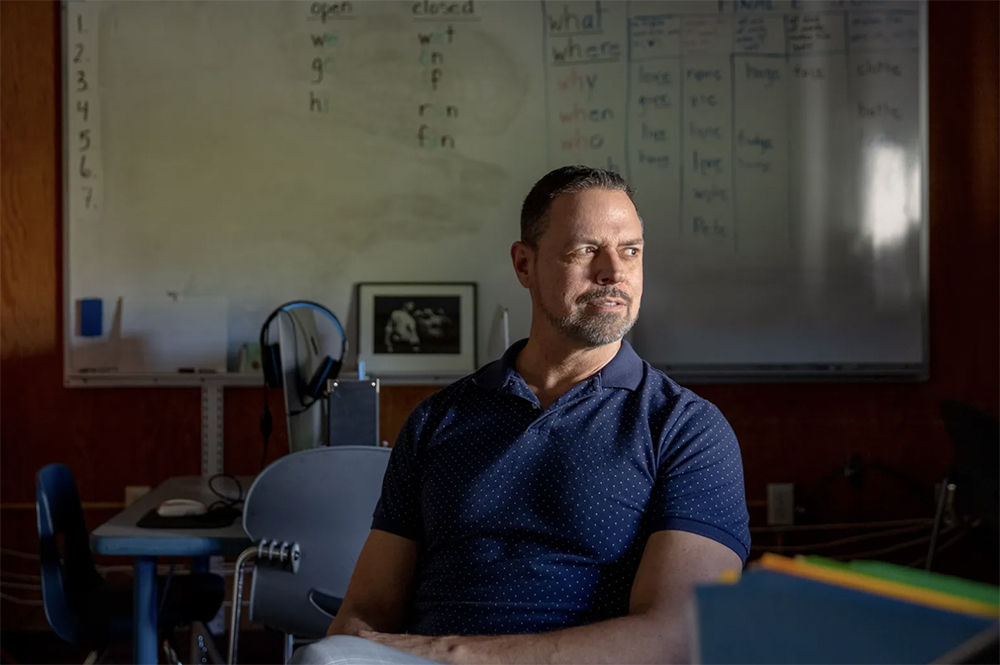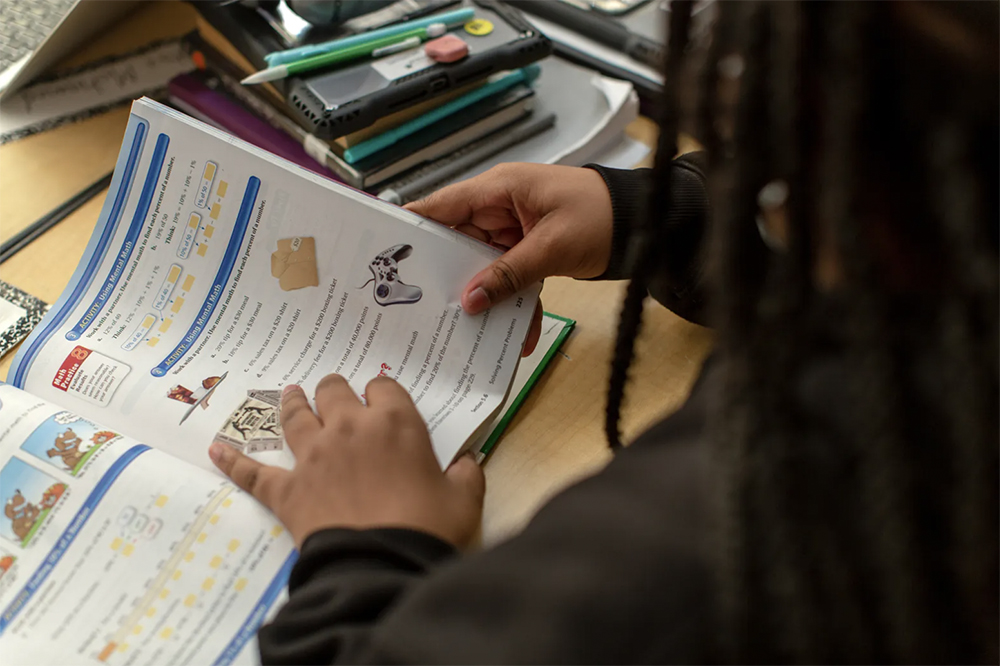Despite Union Opposition, Many California Teachers Support Dyslexia Screening For All Students
The California Teachers Association has opposed dyslexia screening — yet teachers say early intervention is key to heading off academic struggles

Get stories like this delivered straight to your inbox. Sign up for The 74 Newsletter
For years, the California Teachers Association has opposed universal dyslexia screening for students, helping to defeat legislation that would have mandated it. And yet, many classroom teachers are advocating for all students to be tested.
As another possible legislative battle looms, the statewide teachers union’s opposition to mandatory screening continues to frustrate many educators. According to classroom teachers across the state, the California Teachers Association’s position will perpetuate a “wait-to-fail” approach to reading instruction that forces educators to sit by while students fall further and further behind.
Dyslexia is a neurological condition that causes difficulties with reading and affects 1 in 5 people in the United States. But early screening and support can mitigate or even prevent illiteracy stemming from the learning disability.
Officials at Decoding Dyslexia CA, a grassroots advocacy group, say hundreds, if not thousands, of teachers working with students who struggle with reading support universal screening. The California Teachers Association doesn’t understand the benefits of screening all students for dyslexia, said Megan Potente, one of the co-directors of Decoding Dyselxia CA.
“I think there’s some misinformation,” Potente said. “Some of the reasons for their opposition aren’t supported by the research.”
Doug Rich, a veteran teacher and reading specialist at San Francisco Unified, said he’s “gone rogue” and started screening all of his students for signs of dyslexia. He said testing is relatively quick — taking less than 10 minutes — but the results are crucial.
The test results can tell him where his students are struggling, whether it be sounding out letters or recognizing words. If all students were screened in kindergarten, Rich says, fewer would end up working with him.
“We know so much about dyslexia,” he said. “We know the underlying causes. We have these simple tools that are efficient and accurate.”

Reading instructors, education experts and neuroscientists all agree: early screening is one of the best ways to mitigate or even prevent the illiteracy that can be caused by dyslexia. Despite having some of the best experts in the field of dyslexia research, California remains one of 10 states that doesn’t require universal screening.
That’s not for lack of trying. State Sen. Anthony Portantino, a Democrat from Glendale who’s dyslexic, tried and failed twice in the past three years to pass legislation that would have mandated universal screening for students in kindergarten through second grade. In February, he said he is trying a third time.
Although it has not taken a position on the latest bill, the California Teachers Association opposed Portantino’s last two bills. Claudia Briggs, a spokesperson for the union, said the association’s leadership team believed that bills would have caused “unintended harmful consequences.” The association’s position is that universal screening will take valuable time away from instruction and may misidentify English learners as dyslexic by mistaking their lack of fluency in English for a learning disability. Briggs said the union would decide its position on the new bill in March.
Potente is optimistic about this year’s bill. It has 33 co-authors, more than double that of last year’s bill.
If the bill gets to Gov. Gavin Newsom’s desk, it’s not clear whether he’ll sign it. Newsom, who’s also dyslexic, supported dyslexia research by funding UCSF’s Dyslexia Center to the tune of $28 million in recent years. In 2021, he published a children’s book based on his childhood experiences. His office, however, declined to comment on whether he supports universal screening.
In response to the union’s objections, a chorus of experts and classroom teachers, backed by a well-established body of research, contradict its arguments. CalMatters interviewed 10 teachers from across California who said screening students early prevents students from needing more intensive services when they’re older. They also said universal screening would prevent English learners from being referred to special education because it would allow teachers to remedy early signs of reading challenges.
“Teachers are already spending an overabundance of time using other horrible assessments for reading,” Rich said, referring to tests for reading comprehension or vocabulary. “And they’re not getting good information.”
A patchwork of screening
Some districts, like Pleasanton Unified in the Bay Area, already screen all students in kindergarten, first and second grades. In other districts, top officials encourage screening all students but haven’t adopted a universal screening policy.
Jennie Johnson, a reading intervention teacher for the Lancaster School District, 50 miles north of Los Angeles, said the district is in its first year of screening all students. It’s also training teachers on how to use the results from the screening to refine reading instruction.
Universal screening is even more critical now because pandemic-era learning loss resulted in so many students reading below grade level, Johnson said. Half of the fifth graders at her school are currently reading at a third grade level.
“We are not surprised by the lack of literacy because that’s where our school typically is,” she said. “But the number of fourth and fifth grade students reading below grade level is alarming this year.”
In other districts, it’s up to individual teachers to advocate for screening their students. Kristen Koeller, a reading intervention teacher in the Cupertino Union School District, said she has to be strategic about which students get screening. When she recommends a student for a dyslexia screening, she said her supervisors encourage her to use other reading assessments that have been purchased as a part of the district’s reading curriculum. She said this ultimately discourages teachers from using screeners that haven’t been approved by district officials.
While district-approved assessments can help determine a student’s reading level, Koeller said they don’t test whether a student is at risk of dyslexia.
“You can be a bit of a rebel,” Koeller said. “But you can’t just go around thumbing your nose at your boss. I just continue to advocate respectfully for the change I’d like to see.”
Decoding Dyslexia CA includes a coalition of teachers like Koeller who are willing to buck both district policies as well as the California Teachers Association. They lobby state lawmakers and sponsored Portantino’s universal screening bills.
By at least one measure, most California voters support these efforts. A 2021 survey found that 87% of the state’s voters are in favor of a policy requiring universal early screening.
Without a mandate, teachers say, whether a dyslexic student learns to read will be left to chance. That approach deepens inequities, as some students have parents who can afford private assessments and tutoring. But those who lack the resources are much more likely to become illiterate adults.
“I see this as a huge social justice issue,” said Lori DePole, also a co-director of Decoding Dyslexia CA. “This ‘wait-to-fail’ model that we’re using in California is unacceptable.”
The California School Psychologists Association also supports screening all students between kindergarten and second grade, saying a small investment of resources earlier in a child’s education can pay off exponentially.
“If you catch them young, you can implement interventions that may prevent them from needing more intensive services later,” said Melanee Cottrill, executive director of the California Association of School Psychologists.
The importance of early screening
Kristina Delgadillo, a middle school special education teacher at Visalia Unified in the San Joaquin Valley, said she regularly works with students who could have learned to read if they had been screened earlier. She said screening younger students is worth the relatively small time investment.
“I’ve been assessing too many kids for the first time in fourth, fifth and sixth grade when I should have already been providing them services,” she said. “I see kids fall through the cracks.”
Delgadillo cited one study that found that it takes an additional 30 minutes a day for a kindergarten or first grade student with dyslexia to read at grade level. But if a student waits until fourth grade to be screened, it takes two hours a day.
Echoing the concerns of school psychologists, education experts say teachers can mitigate the illiteracy caused by dyslexia if they can detect the warning signs early. Even third grade can be too late, as students go from “learning to read to reading to learn” in other subject areas. If teachers can’t get students reading at grade level by then, it means they’ll struggle with reading textbooks in social studies or word problems in math class.
“Students don’t want to be in a classroom if they can’t read,” said Jordan Paxhia, a special education teacher at San Francisco Unified. While effective reading instruction on its own can’t ensure a student’s success, universal screening is a crucial step to making sure all students can read at grade level.
“Literacy may not be a panacea, but it certainly would give students more of a chance,” Paxhia said.
Teachers say screening English learners is even more urgent. If left unaddressed, dyslexia could delay students’ acquisition of English while they struggle to read their native language as well. And because they aren’t diagnostic tools, a red flag on a dyslexia screener won’t mean a student will be sent immediately to special education. If a dyslexia screener detects a student is struggling with reading, a teacher will spend more time with the student. From there, the teacher and the school can provide more resources and services if necessary.
“I’m not overly concerned about false positives,” Paxhia said. “It doesn’t mean they have dyslexia. And isn’t that a better use of our time than letting something go unnoticed?”
It’s harder to reverse the damage for a student who isn’t screened early. High school and middle school teachers know this best.

Holly Johnson teaches ninth grade English at Santiago High School in Garden Grove. She works with students who read below grade level, but by the time they arrive in her classroom it’s too late to remedy the effects of dyslexia. She doesn’t know for sure how many of her students have dyslexia, but she said it’s clear that they never got the help that would have been provided had they been screened earlier.
“Screening can be done in high school, but it’s so difficult,” she said. “Their relationship with school and their narrative has already been built.”
Research shows that failing to read at grade level can have ripple effects for a student’s academic success as well as their mental health. Students who can’t read will struggle across all subjects in school. They’re less likely to graduate from high school and tend to earn less once they enter the labor force. But in the short term, illiteracy leads to anger and hopelessness for Johnson’s students.
“Rather than being embarrassed about reading, they’ll pick a fight with the teacher,” Johnson said. “That’s more cool than everyone knowing you can’t read.”
A failure to screen students and help them in earlier grades means high school teachers like Johnson must not only teach them how to read but how to rebuild their identities as students.
“If we can get these kids diagnosed, their problems won’t be as big,” she said. “All of it can be nipped in the bud.”
This story was originally published by CalMatters.
Get stories like these delivered straight to your inbox. Sign up for The 74 Newsletter

;)